On Sunday, after we’ve toured the royal city of Angkor Thom (once the capital of the aforementioned Jayavarman VII), Leslie gets sick. All but five of our group have succumbed at one point or another to the intestinal distress that’s inevitable when traveling in Southeast Asia. She and I are riding back to Siem Reap in a Tuk-Tuk, hoping to reach our hotel room soon, but the poor woman looks peaked, she’s wincing and grimacing, and I ask the driver to stop before we get into the city. Leslie jumps out and flees into the sheltering jungle for relief. I keep my fingers crossed that she doesn’t step on a cobra.
While in Angkor Thom, Pich guided us over a bridge lined on one side with the busts of 54 Hindu gods and on the other with 54 demons. Another lesson in Hinduism’s bewildering complexities. She informed us that the total number of busts — 108 — is significant. One plus zero plus eight equals nine, the number of prosperity. Angkor Thom was more impressive than Ta-Prohm, with beautiful friezes depicting apsara dancers and a battle between the armies of the Khmer Empire and its rival, the Cham kingdom.
The final day: Leslie rallies well enough to rise at 4;30 a.m. to view Angkor Wat at sunrise. The word means “city monastery,” for it was both a temple and a city unto itself. Nothing remains of the latter, the houses having been built of perishable stuff like wood and thatch. The temple, still being restored, was made of sandstone, laterite, and brick. It is stupendous, at more than 500 acres the largest religious site on the planet. Compared with it, the great cathedrals of medieval and Renaissance Europe are little more than country churches. It’s a monument to the ancient Khmers’ architectural and engineering know-how, the virtuosity of their artisans, the skills and endurance of their laborers. It is estimated that 300,000 of the city’s one million people worked to build the temple, dig the moat around its walls, and construct the vast reservoirs ( in use today) that supplied the city with fresh water.
Built over a period of 50 years during the reign of Suryavarman II, Angkor Wat was dedicated to Vishnu. A king who thought big, Suryavarman was: the temple symbolized the entire universe. The moat represents the cosmic ocean, the concentric galleries mountain ranges; the three levels of steep staircases, climbing to the five towers of the central shrine, represent the ascent to Mount Meru, in Hindu as well as Buddhist cosmology the home of the gods, the center of all creation.
We enter the temple from the west, trooping across a long causeway spanning the moat. Our hope that the crowds would be sparse at pre-dawn proves delusional. I’ve seen less people in mid-town Manhattan on a workday. We make our way onto a wide ledge along a wall and wait for the sun to show itself through the thin haze graying the sky. A distance in front of us is the gopura, or entrance: three oblong towers with long, hook-shaped serpent figures lining the sides of their roofs; in silhouette, they resemble fat evergreens. The sun, a dark red disc, comes up, and our new guide, Sarom, tells us that the towers were erected so that sunrise would occur over the center tower at the equinox.
We file past a vast mob of homo-touristensis gathered around a pond, taking pictures of the towers and the new sun reflected in the water. Those in the rear ranks have their cellphones and cameras raised overhead and look as though they’re performing some strange religious rite. The crowds, the heat and humidity get to Leslie, who hasn’t fully recovered from yesterday. Suddenly, she moves off to the side, falls to her knees, then to all fours, and vomits. I go to her with Mark Hauswald, the excursion’s doctor, and David May, a guest who happens to be a retired surgeon. She’s certainly well-attended, but there isn’t a lot we can do for her. Mark gives her a packet of Immodium and some anti-nausea pills; then, David Brotherson and I walk her around the temple to its rear entrance. Given the size of the place, it’s quite a long walk, but blessedly free of people. We hardly see a soul.
Leslie sits down in the shade of a tree, and hands me her camera, telling me that she’ll be all right and to go inside and take some pictures. David leads me up a staircase to a gallery that’s a real jaw-dropper. In one continuous panel more than 50 yards long, a bas relief depicts the Churning of the Sea of Milk, an event from the great Hindu creation myth, the Bhagavata Purana. Gods and demons hold a gigantic serpent, the gods at one end, the demons at the other, Vishnu at the center. The figures are beautifully realized, cut into the sandstone with great care and precision. I would have no idea what the hell I’m looking at if Brotherson wasn’t with me. In the myth, the deities and demons work together at Vishnu’s command, alternately pulling on the serpent, which is coiled around a mountain, causing it to rotate in the cosmic sea. Kind of a titanic food processor. They churn for 1,000 years, producing amrita, the elixir of immortality. Why the cosmic sea was milk instead of water would have to remain a mystery. I snap a few photos.
We move on to the next gallery, where another splendid relief shows souls consigned to heaven and hell, according to the edicts of Yama, the god of judgment. We walk along its length, nearly 70 yards, but then encounter what appears to be several thousand Chinese tourists. In that dim, stifling corridor, I feel that I’m in a Beijing subway at rush hour.
Half an hour later, I’m waiting in a long line to climb the steps to the central shrine, the symbol of Mount Meru. But the line is moving very slowly, I’m worried about Leslie, so I forego the ascent and return to where I left her, under the tree. Most of our group are there, but not Leslie. In a few minutes, she reappears emerging from the Sea of Milk gallery. Maybe she absorbed the essence of the elexir. Several people cheer and applaud her comeback. She pauses at the top of the staircase, and, as if to mimic some priestess bestowing a blessing, spreads her arms wide and bows.
It is now 9 a.m., the excursion is over. Leslie hang around Siem Reap for the day; then, with bags packed, we are driven to the airport for a night flight to Shanghai and connections for the trans-Pacific flight home. Finis.
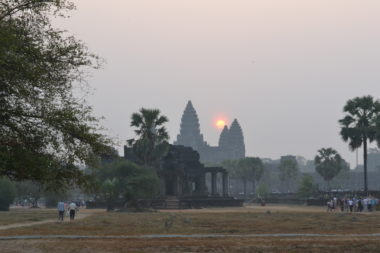
Sun rise over the entrance to Angkor Wat.
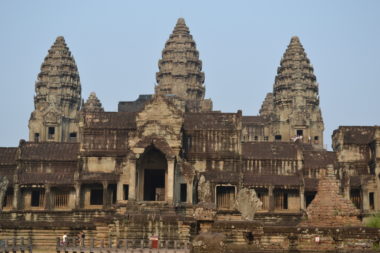
The 3 towers at the entrance to Angkor Wat
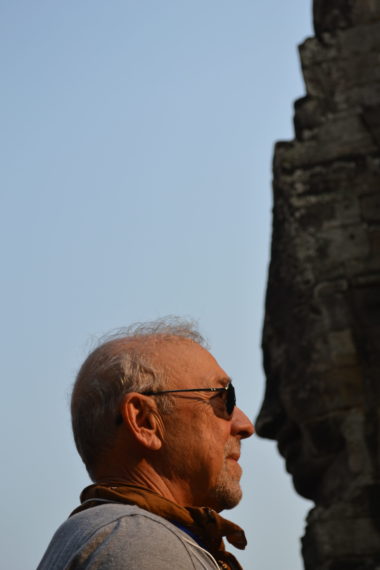
Me, nose to nose with a face of Buddha at Angkor Thom
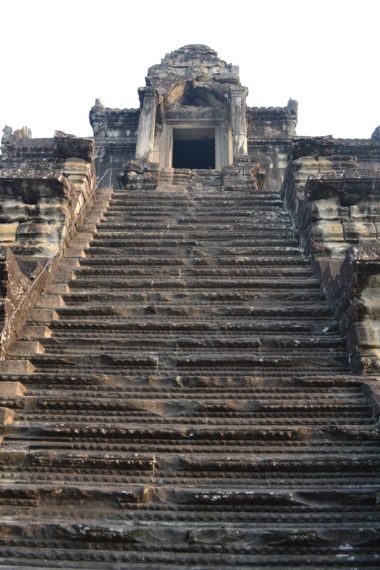
Staircase to the central shrine at Angkor Wat, symbolizing the ascent to Mount Meru, home of the gods.


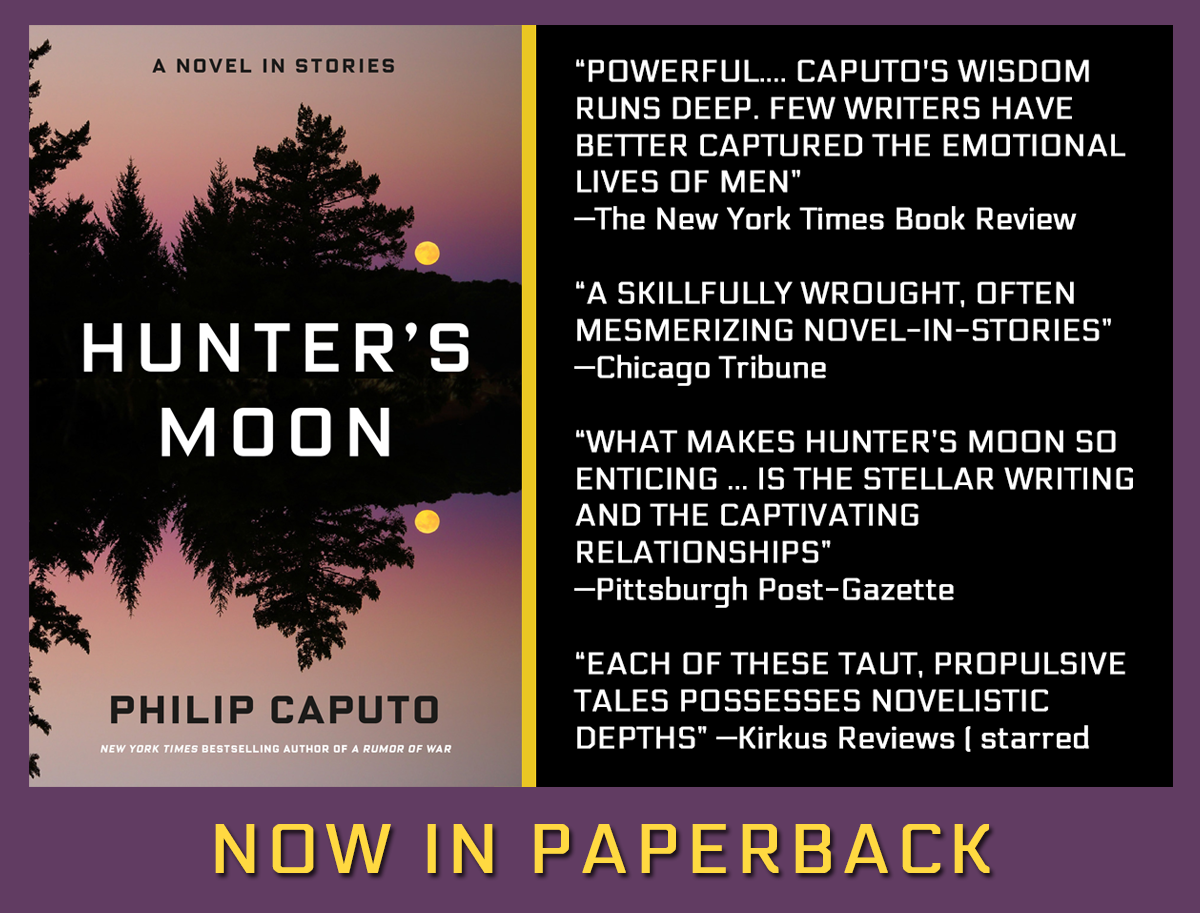
Hi Phi
Just read your notes on your trip. that had to be quite a experience.
I imagine things are different then the last time you were there.
Mario Zampa
P.S. your mom and Joahnne my wife were cousons just a reminder